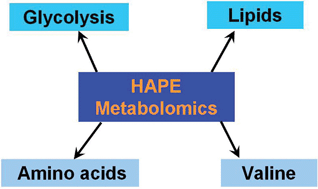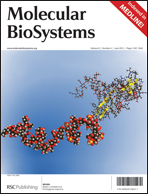Upon rapid ascent to a high altitude, non-acclimatized individuals, although healthy, are highly prone to contracting high-altitude pulmonary edema (HAPE). Early diagnosis is difficult and there is no reliable biomarker available. We used proton (1H) NMR metabolomics to profile the altered metabolic patterns of blood plasma from HAPE patients. The plasmas of ten patients with HAPE and ten individuals without HAPE were collected and compared using 1H NMR spectroscopy. Data were evaluated with several multivariate statistical analyses, including the principal components, the orthogonal partial least-squares discriminant, and the orthogonal signal correction partial least-squares discriminant. Multivariate statistical analyses revealed a significant disparity between subjects with HAPE and those in the control group. Compared to the plasma of the controls, the HAPE patients had significant increases in valine, lysine, leucine, isoleucine, glycerol phosphoryl choline, glycine, glutamine, glutamic acid, creatinine, citrate, and methyl histidine. These were accompanied by decreases in α- and β-glucose, trimethylamine, and the metabolic products of lipids. The data demonstrate that metabolomics may be effective for the diagnosis of HAPE in the future, and can be used for further understanding HAPE pathogenesis.


 Please wait while we load your content...
Please wait while we load your content...